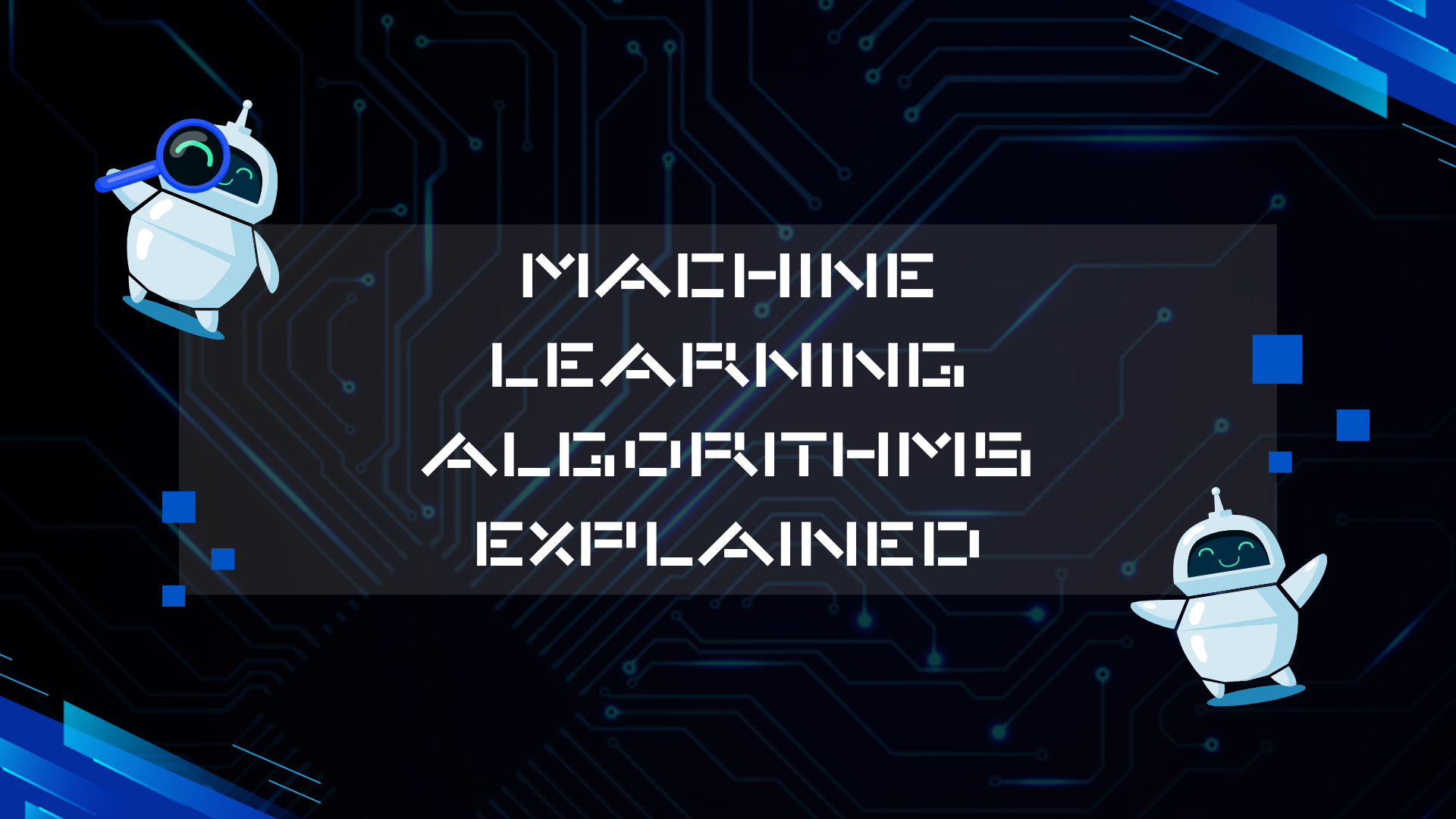Machine Learning Algorithms Explained

Machine learning (ML) has become a cornerstone of modern technology, enabling systems to learn from data and make intelligent decisions. From healthcare diagnostics to autonomous vehicles, machine learning algorithms drive innovation across industries.
This article provides an in-depth explanation of machine learning algorithms—covering their types, functionality, applications, challenges, and limitations.
What is Machine Learning?
Machine learning is a subset of artificial intelligence (AI) that enables systems to learn and improve from experience without being explicitly programmed. It involves training algorithms on data to create models capable of making predictions or decisions. ML algorithms are categorized based on their learning approach:
- Supervised Learning
- Unsupervised Learning
- Semi-Supervised Learning
- Reinforcement Learning
Types of Machine Learning Algorithms
1. Supervised Learning
Supervised learning involves training algorithms on labeled datasets, where each input has a corresponding output. The algorithm learns to map inputs to outputs by minimizing prediction errors.
- Linear Regression: Predicts continuous values (e.g., stock prices, sales figures) by establishing a relationship between input and output variables.
- Logistic Regression: Used for binary classification tasks (e.g., spam detection, disease diagnosis), predicting probabilities using a sigmoid function.
- Decision Tree: A tree-like model that splits data into subsets based on feature values for classification and regression.
- Support Vector Machines (SVM): Separates data points using hyperplanes in an n-dimensional space for classification.
- Random Forest: An ensemble of decision trees that improves accuracy and reduces overfitting.
2. Unsupervised Learning
Unsupervised learning deals with unlabeled data, aiming to uncover hidden patterns or structures.
- K-Means Clustering: Groups data points into clusters based on similarity; used in market segmentation and customer profiling.
- Dimensionality Reduction (e.g., PCA): Reduces the number of features while retaining essential information to simplify models.
3. Semi-Supervised Learning
Semi-supervised learning uses a mix of labeled and unlabeled data. It is useful when labeled data is scarce or costly to obtain, improving learning accuracy with fewer labeled examples.
4. Reinforcement Learning
Reinforcement learning trains agents to make decisions by interacting with environments and maximizing cumulative rewards.
- Q-Learning: A value-based algorithm that learns the optimal actions through trial and error.
- Deep Q-Networks (DQN): Combines Q-learning with deep neural networks for complex tasks like gaming or robotic control.
Popular Machine Learning Algorithms
| Algorithm | Type | Applications |
|---|---|---|
| Linear Regression | Supervised | Price prediction, sales forecasting |
| Logistic Regression | Supervised | Fraud detection, medical diagnosis |
| Decision Tree | Supervised | Customer segmentation, analytics |
| Support Vector Machines | Supervised | Image and text classification |
| K-Means Clustering | Unsupervised | Market segmentation, anomaly detection |
| Random Forest | Supervised | Risk analysis, recommendation systems |
| Gradient Boosting | Supervised | Financial modeling, competitive ML tasks |
Applications of Machine Learning
Machine learning is transforming various sectors with practical applications:
- Healthcare: Diagnoses diseases via medical imaging, develops personalized treatments, and aids in drug discovery.
- Finance: Enhances fraud detection, credit scoring, and algorithmic trading.
- E-commerce: Powers recommendation engines that personalize customer experiences.
- Manufacturing: Enables predictive maintenance by analyzing sensor data.
- Transportation: Drives autonomous vehicles by interpreting real-time data for navigation and safety.
Challenges in Machine Learning
Despite its potential, ML comes with several challenges:
1. Overfitting
Occurs when a model performs well on training data but poorly on unseen data due to excessive complexity. Regularization and cross-validation help combat this.
2. Underfitting
Happens when a model is too simple to learn meaningful patterns. Using more sophisticated models or engineering better features can resolve this.
3. Data Quality
Poor-quality data with missing values or outliers can distort model performance. Data preprocessing and cleaning are critical.
4. Imbalanced Datasets
When one class significantly outweighs others, models may become biased. Resampling or using specialized algorithms can help.
5. Scalability
Processing large datasets can strain computational resources. Distributed computing and parallel processing can alleviate this.
6. Model Interpretability
Complex models (e.g., neural networks) can be difficult to interpret, complicating decision justification. Model explainability tools are essential.
Limitations of Machine Learning
While powerful, ML has its limitations:
1. Dependence on Data Quality
ML models rely heavily on the data they're trained on. Biased or incomplete data leads to flawed outputs.
2. Lack of Transparency
Many ML models function as "black boxes," making it difficult to explain how decisions are made.
3. High Computational Costs
Training and deploying models can require extensive computational power and storage.
4. Ethical Concerns
ML systems can unintentionally reinforce biases or raise privacy issues, especially when using personal data.
5. Limited Creativity
While adept at pattern recognition, ML lacks the creative and intuitive capabilities of human intelligence.
Conclusion
Machine learning algorithms form the backbone of intelligent systems across industries. Understanding the types—supervised, unsupervised, semi-supervised, and reinforcement learning—and their respective roles is essential to leveraging their full potential.
Although ML faces challenges such as overfitting, scalability, and ethical concerns, continued research and innovation are addressing these hurdles.